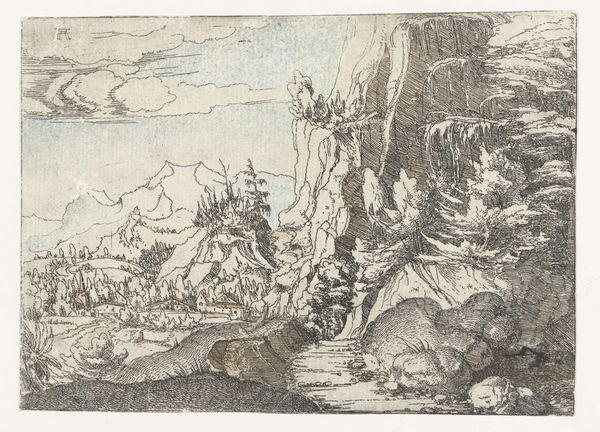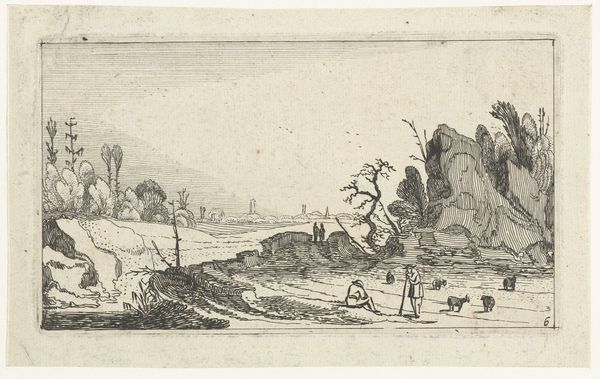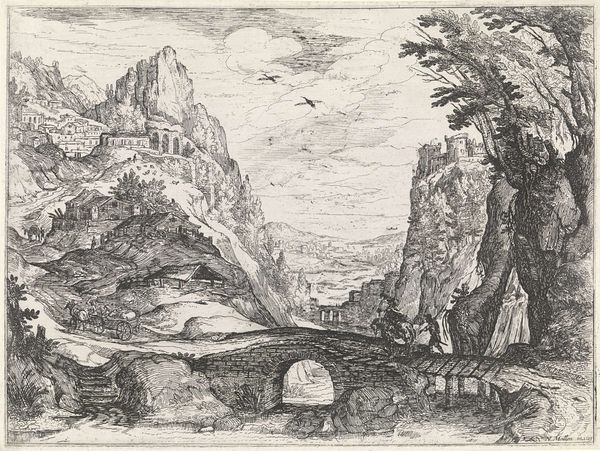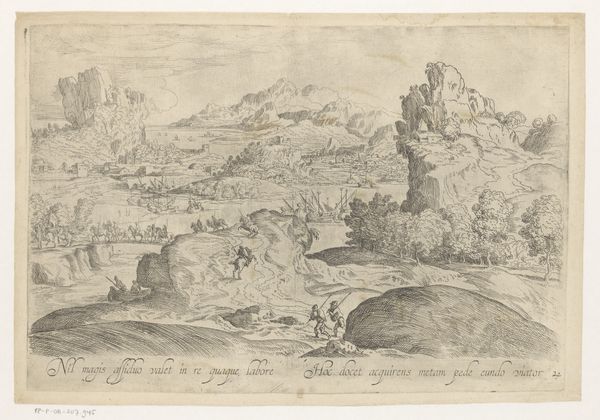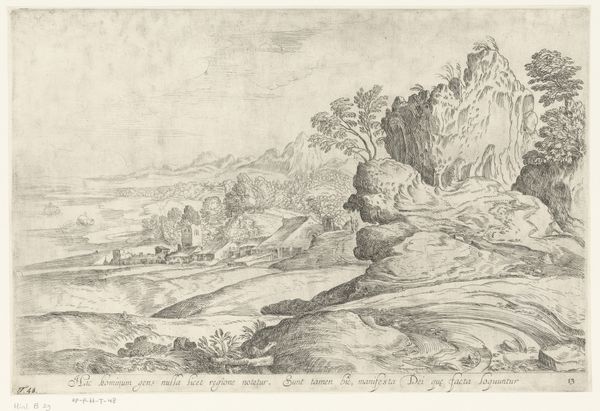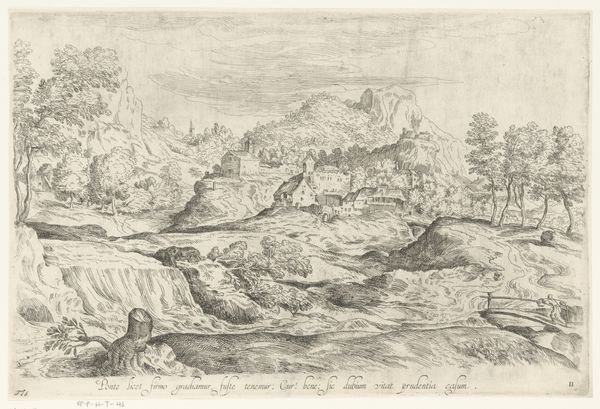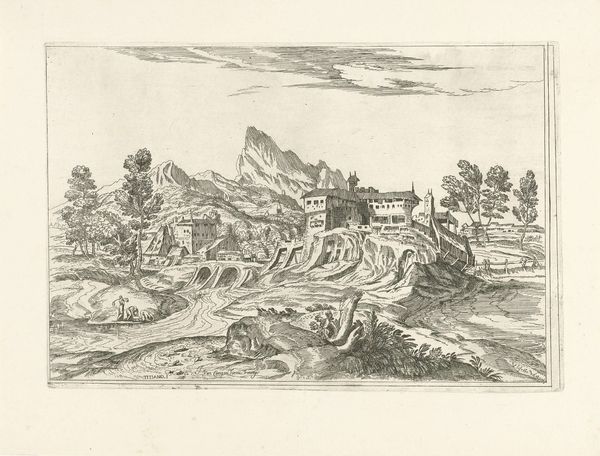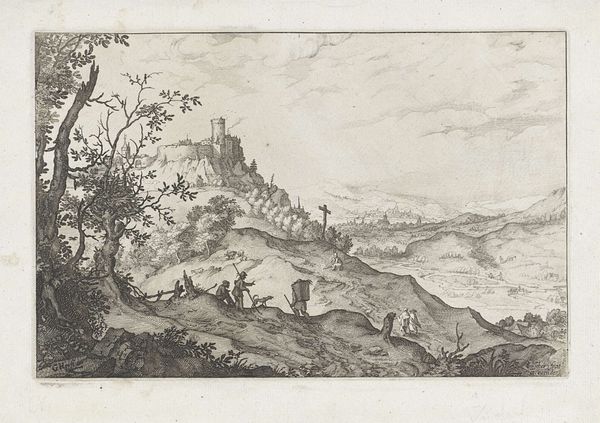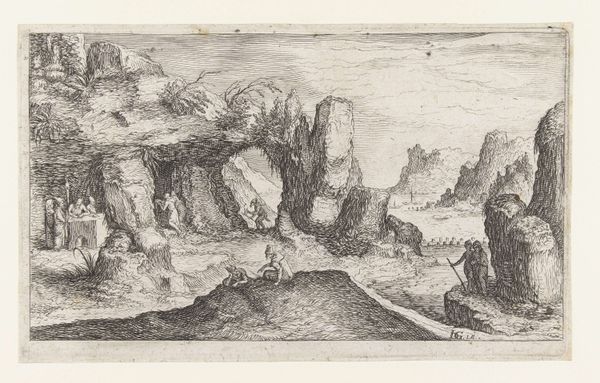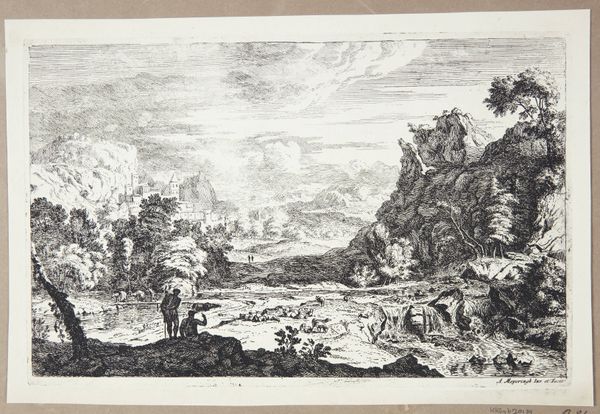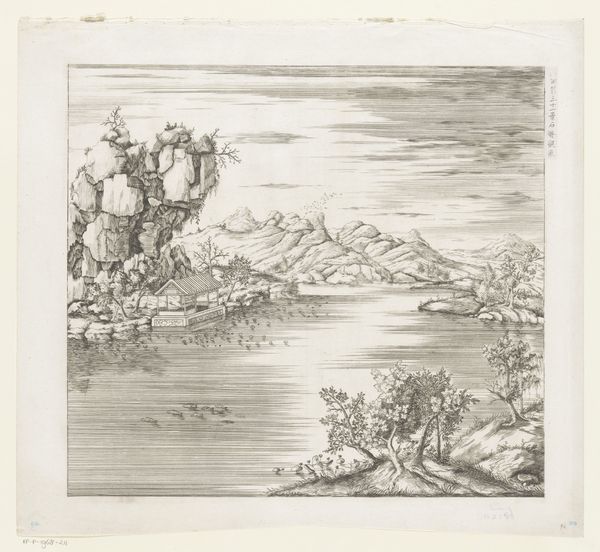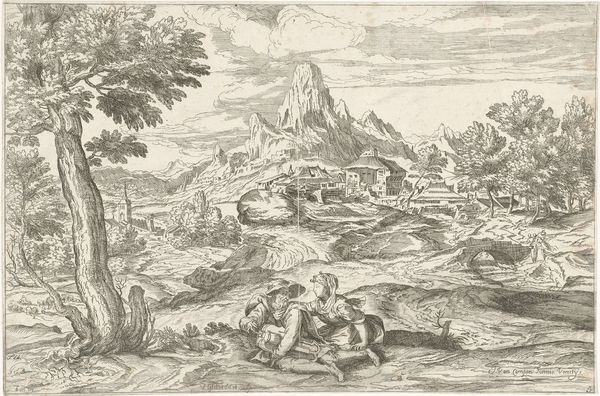
drawing, print, engraving
#
drawing
# print
#
pen sketch
#
landscape
#
northern-renaissance
#
engraving
Dimensions: height 108 mm, width 149 mm
Copyright: Rijks Museum: Open Domain
Editor: So, this is "Landscape with a Large Castle," an engraving by Albrecht Altdorfer, made sometime between 1506 and 1522. It's incredibly detailed for such a small print! I'm really drawn to the way the castle dominates the landscape but also seems… vulnerable somehow. What's your take on this piece? Curator: The 'vulnerability' you sense is interesting, given the socio-political role castles played. They weren't just residences; they were symbols of power, control. But Altdorfer positions this one within a vast, almost overwhelming landscape. Think about the context of the early 16th century. The Holy Roman Empire was facing internal religious conflicts and external threats. Is Altdorfer suggesting the traditional power structures are becoming dwarfed by larger forces? Editor: That’s a good point! It does seem to blend reality and idealization. Like, it’s a real castle, probably inspired by the Danube region, but also part of an invented, romantic landscape. Was landscape art like this offering some form of escape or perhaps shaping a kind of national identity? Curator: Exactly! The rise of landscape as an independent genre in the North coincided with a growing sense of regional identity, particularly in the face of the Italian Renaissance’s dominance. By depicting local landscapes, artists like Altdorfer were subtly asserting cultural value and independence. This engraving could be seen as participating in a visual rhetoric, a dialogue about place and belonging. Notice the prominent position given to the nature and how much smaller man's architectural accomplishment seems to be within its surrounding. Editor: That reframes how I saw the castle being 'vulnerable'. It's less about military weakness and more about…the fleeting nature of human achievements. Curator: Precisely! And this awareness invites a re-thinking about whose values and which accomplishments a society chooses to memorialize through Art and cultural activities. Editor: That gives me so much more to think about when I look at it. Thanks! Curator: It was a stimulating observation – now I'll ponder this piece in a different light myself.
Comments
No comments
Be the first to comment and join the conversation on the ultimate creative platform.
